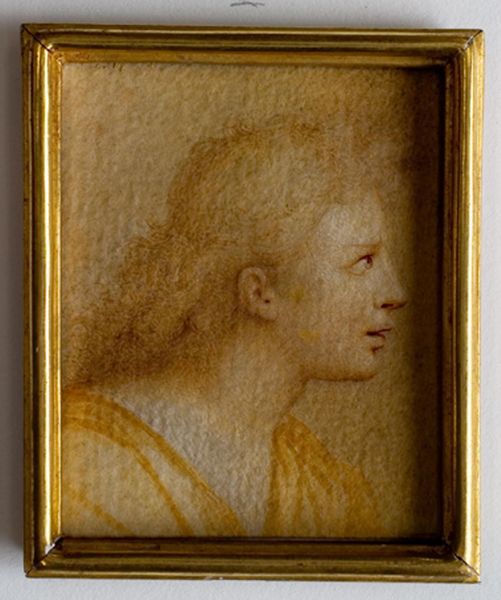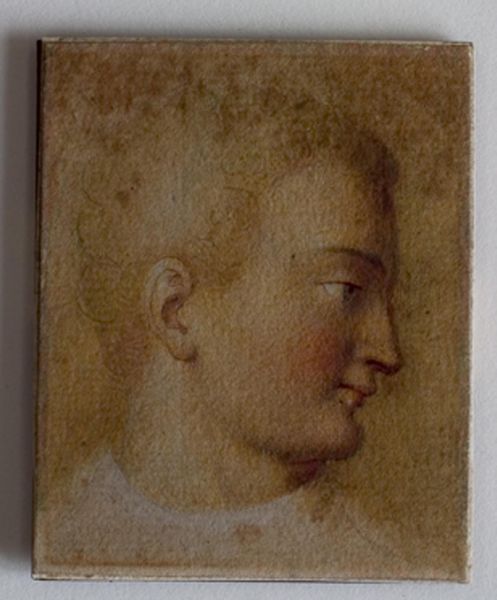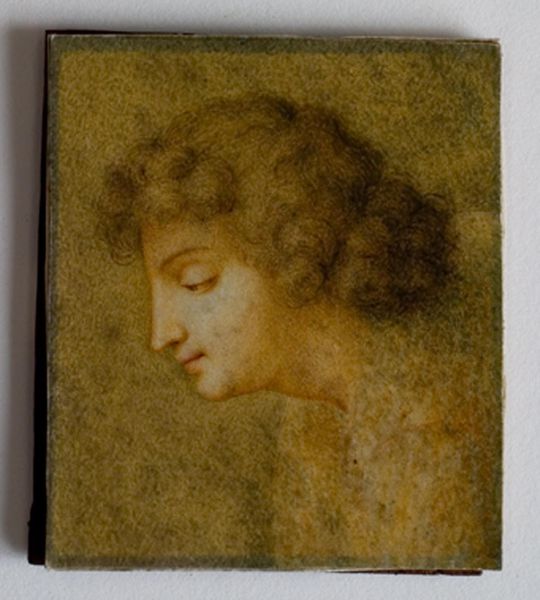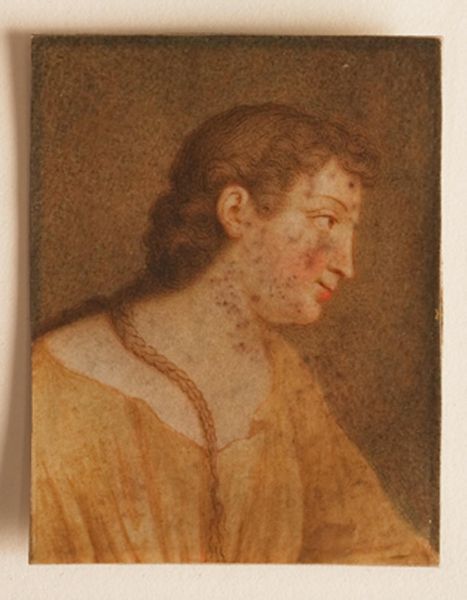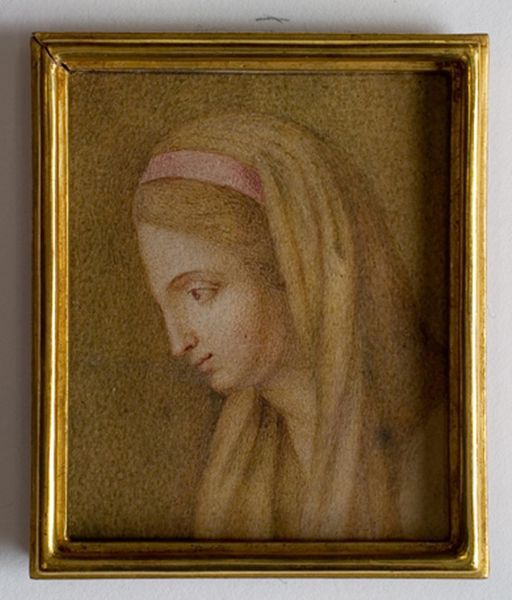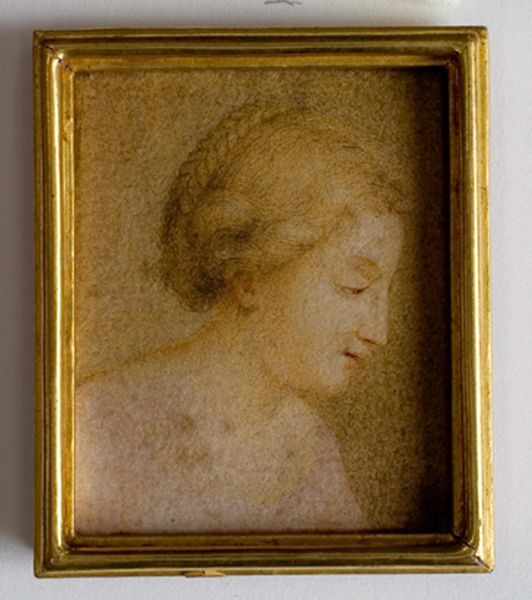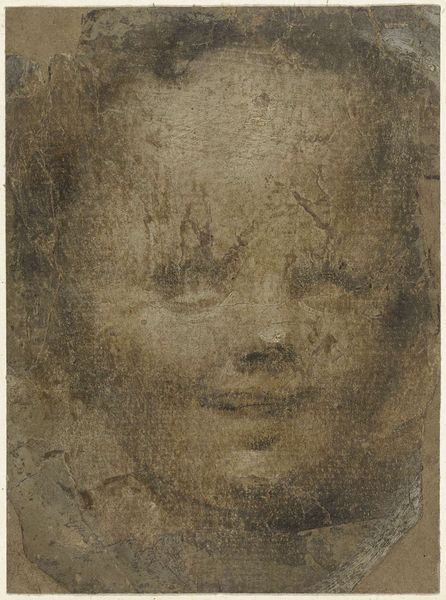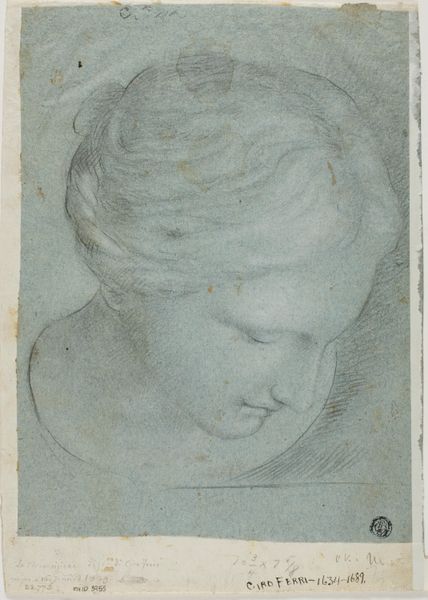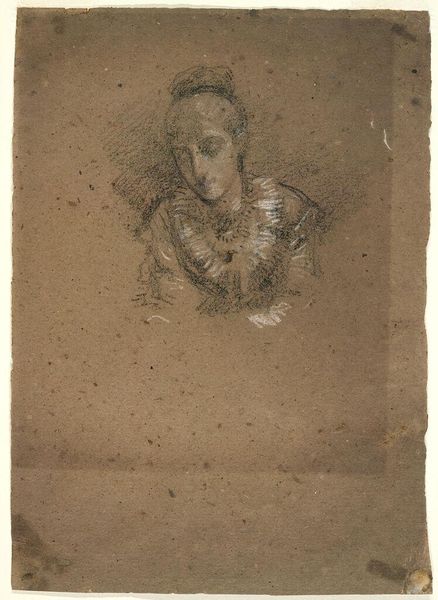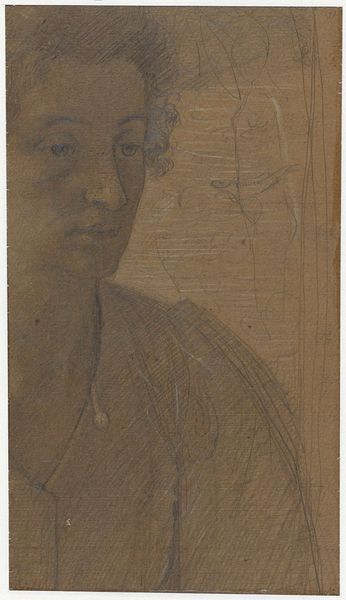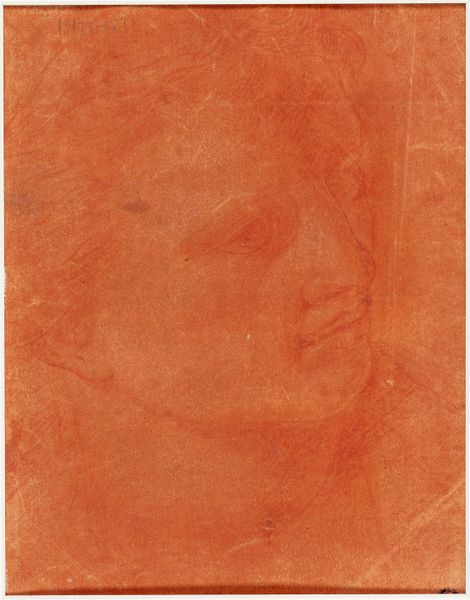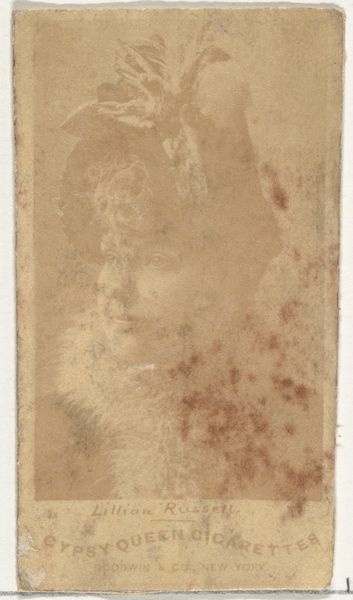
painting, oil-paint
#
portrait
#
painting
#
oil-paint
#
oil painting
#
underpainting
#
painting painterly
#
animal drawing portrait
#
genre-painting
#
academic-art
Dimensions: 6.1 cm (height) x 5.2 cm (width) (Netto)
Editor: Here we have "Idealt ynglingehoved" from sometime between 1726 and 1748. It’s an oil painting by David Gardelle, housed at the SMK. It looks almost like an unfinished sketch to me. What are your thoughts on this piece? Curator: Considering Gardelle's "Idealt ynglingehoved," I am drawn to the material conditions of its creation and its relationship to societal structures of the time. Academic art placed a heavy emphasis on training and the master-apprentice model. How does this piece reflect the systems of artistic production and labor prevalent in the 18th century? Is this preparatory work connected to any of the portraits exhibited in European Royal courts? Editor: That’s interesting, I hadn’t considered the apprenticeship aspect. It makes me think about the time investment and the skill involved in creating the painting. It isn’t simply about the "idealized youth", it is about who is given access to portray such an image, and for whom such images were produced and intended. Do you see any relationship to social status within the materiality of the piece? Curator: Absolutely. The use of oil paint itself was tied to wealth and patronage. Who was able to commission oil paintings, and what does that tell us about the social context of art production and consumption? Perhaps the perceived ‘unfinished’ nature is a signifier of different class status in that Gardelle might be interested in sketching lower class persons, perhaps even as practice before executing a larger and better commissioned painting of aristocracy. How can we examine the relationship between artistic skill, the materials used, and the societal hierarchies reflected in the artwork? Editor: I’ve definitely gained a new appreciation for the piece, moving beyond just the aesthetic impression. The oil, the canvas...they’re all part of a larger story about labor, patronage, and skill. Curator: Indeed. By understanding the conditions of the work's production and consumption, we move beyond aesthetics to examine the broader socio-economic forces shaping artistic creation.
Comments
No comments
Be the first to comment and join the conversation on the ultimate creative platform.
